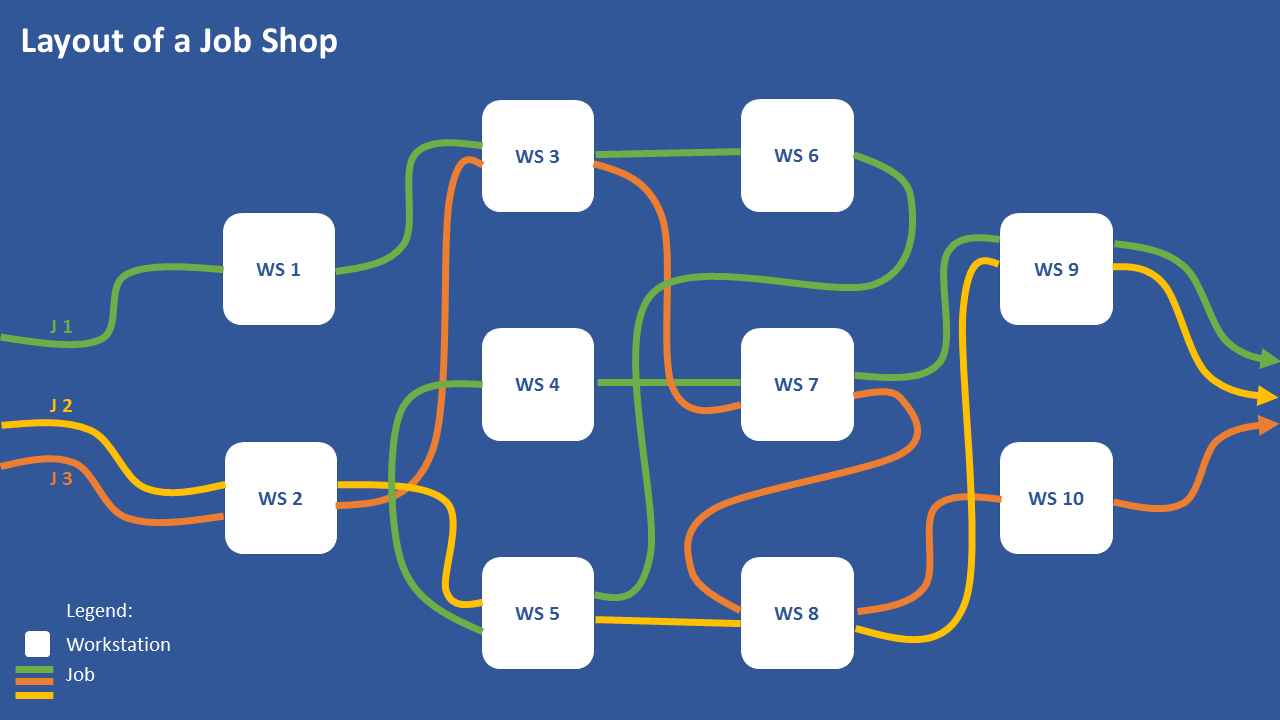Menu

For many job shop owners and managers, the Theory of Constraints (TOC) is not unfamiliar when it comes to production scheduling. In this blog post, I am excited to share some intriguing insights that emerged during a thought-provoking conversation between my colleague Martin, part of our Microsoft Dynamics 365 Business Central Team, and Ivar Keskpaik, a Business Consultant for Softera Baltic in Lithuania. Their discussion delved into how manufacturing companies utilizing Microsoft Dynamics 365 Business Central can effectively apply the principles of TOC. While Business Central caters to SMBs as an ERP System, the insights shared by Ivar may resonate with all job shop managers or owners, regardless of their ERP System usage. So, I am eager to share this insightful content with both current and prospective customers of just plan it, our production scheduling software for high-mix low-volume manufacturers.
From Ivar's perspective, the key challenge in TOC acceptance for job shop owners and managers lies in the necessary shift in mindset and decision-making approach from cost-based to flow-based strategies.
As Ivar explained in the podcast episode with Martin, the TOC concept was developed by Eliyahu M. Goldratt in the late 70s of the last century and describes a management philosophy and methodology that allows one to focus only on the constraints in a process and to make good bottom-line results for a short period in any type of company. TOC is more complex than other management theories, such as Lean or Six Sigma, and Ivar admitted that it took him 20 years to grasp it fully.
As Ivar went on, the high complexity of TOC lies in its being based on a flow-based approach. Flow-based thinking is about making sure things move smoothly and efficiently from start to finish, therefore trying to detect the constraints, bottlenecks, or limitations in a process and maximizing them to the maximum flow. Transferring this to the typical Business Central manufacturing customers, namely SMBs, their constraints are always on resources. However, typically the bottleneck isn't stable, but it keeps on shifting from one work or machine center to another.
Once the constraint has been detected - by scrutinizing the workload of the different capacities - the planning must only be done for this resource. The workload should not be distributed equally among all resources to remove the constraint.
Talking about best practices for implementing TOC at manufacturing companies, Ivar stressed, that the first step always will be to detect the location of the constraints, by checking the workload of the resource capacities in a certain period. The strategy to remove the constraints is to start work orders as late as possible, by considering the capacity workload and prioritizing them according to the remaining time until the due date. He emphasized that this flow-based approach is not about having a balanced workload, but detecting bottlenecks and removing them.
Often, customers mistakenly think that their most expensive resource is their bottleneck and hence are not happy when hearing that to remove the constraint, they will have to disbalance their resources and even take away workload from their most expensive machine. They fear that this will bring their production cost up or that the cost per unit of this machine will increase significantly.
Ivar understands the mindset of this cost-based scheduling approach in opposition to the flow-based approach. Both scheduling approaches have the goal of making a profit. However he emphasizes the flow-based approach will bring results like better profits, a bigger turnover, and higher customer satisfaction in a comprehensively shorter time compared to a resource-, or cost-based approach.
The larger the pipeline, the greater the value of maximizing flow to ensure timely delivery of more work orders, ultimately leading to increased profitability.
When discussing the hurdles of implementing TOC, Ivar highlighted that shifting from a cost-centric mindset to prioritizing flow can pose a significant challenge for managers. This shift demands a change in perspective and a new paradigm, as many business owners are entrenched in cost-focused strategies.
His advice: Focus on profitability, not just costs.
Check out the full episode of the podcast (The Theory of Constraints and Business Central manufacturing) I mentioned in this blog post for more insights and valuable information from Ivar about production scheduling, flow-based thinking, and combining TOC with Six Sigma and Lean.
The Theory of Constraints and its application to job shop scheduling
Explore various perspectives that challenge the advantages of integrating TOC into job shop operations.
Overcoming bottlenecks: the key to successful job shop scheduling
Discover why there are instances where embracing bottlenecks can be a strategic and sensible decision.
Share your insights and experiences with implementing TOC in job shop scheduling. We're excited to hear your thoughts, so drop us a comment below! 🖍️
just plan it is a production scheduling software plus scheduling tools & best practices to help high-mix low-volume make-to-order manufacturers gain transparency and control over their shop operations. The software plus its methodology is used by thousands of people around the globe. They consistently achieve improved on-time deliveries, shorter lead times, and better utilization of their resources.
As just plan it is not just software, but a lot of processes and best practices, we recommend that you start with an exploratory meeting. If we agree that there is a fit between your requirements and our approach, we'll build a prototype for you.
Hence, it all starts with a meeting. Book that meeting now.
These Stories on Job Shop Scheduling
Made with by BOYUM IT SOLUTIONS GmbH (Copyright © 2024) Read our Privacy Policy & Terms of Service
No Comments Yet
Let us know what you think